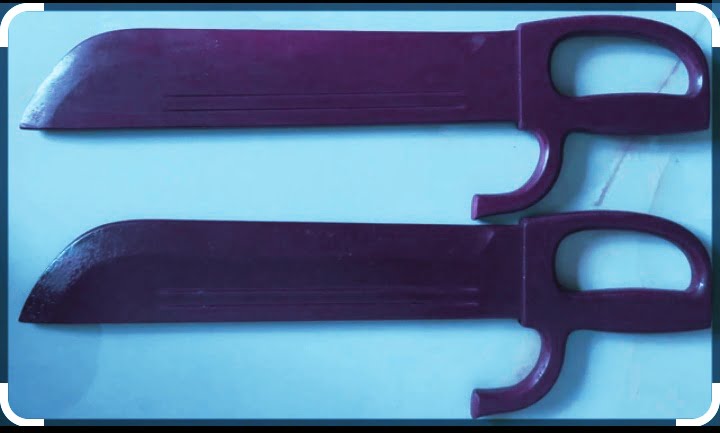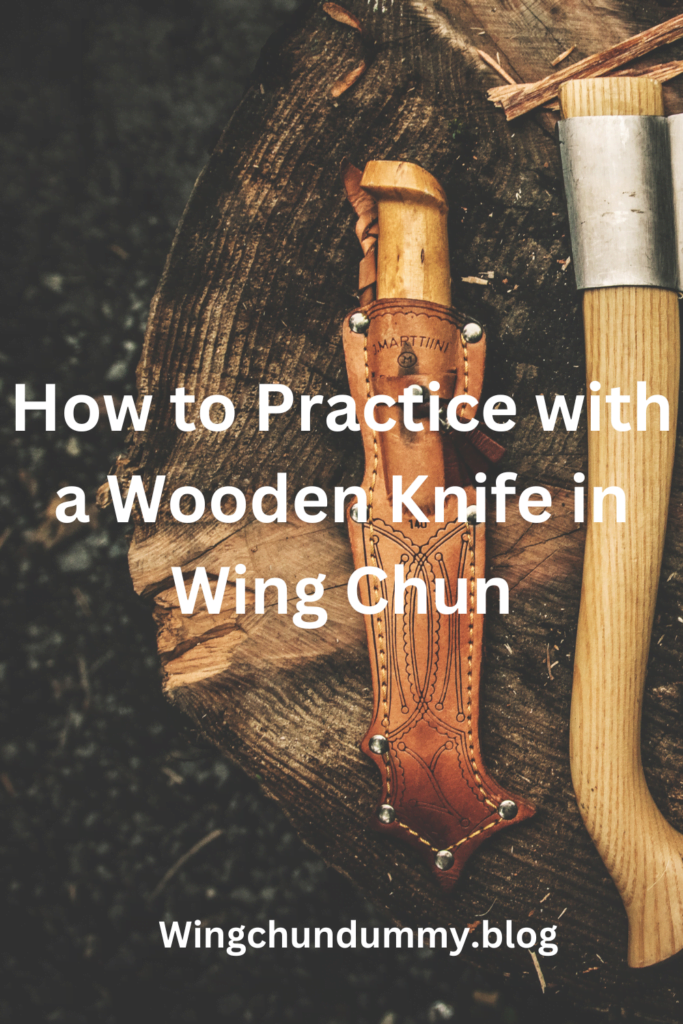Wing Chun is a traditional Chinese martial art that focuses on close-range combat and self-defense techniques.
One of the unique aspects of Wing Chun is its use of weapons training.
Including the Wing Chun Wooden Knife , also known as the “butterfly knife” or “butterfly swords.”
Why Practice with a Wooden Knife?

Practicing with a wooden knife in Wing Chun can provide several benefits.
First and foremost, it helps to develop your coordination, speed, and precision.
The wooden knife is lighter than a real knife, allowing you to focus on your technique without the added risk of injury.
It also helps to improve your understanding of distance and timing, as well as enhancing your overall body mechanics and footwork.
Basic Techniques
Before you start practicing with a wooden knife, it’s important to have a solid foundation in Wing Chun’s empty-hand techniques.
Once you are comfortable with the basic hand movements and footwork, you can begin incorporating the wooden knife into your training.
Here are a few basic techniques to get you started:
1. Knife Grip
Hold the wooden knife in a relaxed grip with your thumb on the outside of the handle and your fingers wrapped around it.
Keep your wrist flexible to allow for quick movements and changes in direction.
2. Blocking and Deflecting
Practice blocking and deflecting techniques using the wooden knife.
Start by assuming a Wing Chun stance and have a partner simulate attacks with their own wooden knife or a padded training tool.
Use your knife to intercept and redirect their strikes, focusing on maintaining control and neutralizing the threat.
3. Striking and Thrusting
Work on your striking and thrusting techniques with the wooden knife.
Practice executing precise and controlled strikes to specific targets, such as the throat, abdomen, or limbs.
Focus on generating power from your body’s center and maintaining proper body alignment throughout the movement.
4. Footwork and Body Mechanics
Pay attention to your footwork and body mechanics while practicing with the wooden knife.
Move with agility and maintain a stable base, utilizing the principles of Wing Chun’s centerline theory.
Coordinate your movements with your knife techniques, ensuring that your footwork supports your strikes and defenses.
Partner Drills
Training with a partner is crucial when practicing with a wooden knife in Wing Chun.
It allows you to work on your timing, distance, and sensitivity to your opponent’s movements.
Here are a few partner drills you can incorporate into your training:
1. Chi Sao (Sticky Hands)
Chi Sao is a fundamental Wing Chun drill that involves maintaining contact with your partner’s arms while practicing various techniques.
Adapt this drill to include the wooden knife, focusing on maintaining control and sensitivity while executing knife techniques.
2. Knife Sparring
Once you have a solid foundation in the basic techniques, you can progress to knife sparring with a partner.
Start with slow and controlled movements, gradually increasing the speed and intensity as you become more comfortable.
Remember to prioritize safety and wear appropriate protective gear.
Safety Considerations
When practicing with a wooden knife in Wing Chun, safety should always be a top priority.
Here are a few important safety considerations:
- Always wear appropriate protective gear, such as gloves and eye protection, during partner drills and sparring.
- Communicate with your training partner and establish clear boundaries and rules before starting any practice session.
- Start slow and gradually increase the speed and intensity of your movements as you gain confidence and proficiency.
- Never use a real knife or any sharp object during training sessions.
- Regularly inspect your wooden knife for any signs of damage or wear and replace it if necessary.
Remember, practicing with a wooden knife in Wing Chun is not about learning how to use a knife for self-defense.
But rather about developing your overall martial arts skills and enhancing your understanding of the principles and techniques of Wing Chun.
By incorporating the wooden knife into your training, you can further refine your coordination, precision, and body mechanics, ultimately improving your overall proficiency in Wing Chun.
Let’s us know about your thoughts on Wing Chun Wooden Knife.
Thanks


